Today, everybody is talking about it. Digital. Digital disruption. Digital transformation. Everything digital. At 2by2 we are often asked what digital transformation, or digital disruption, means for corporate strategy.
In this Insight on Strategy, we will share our perspective on the hot topic of digital and how it can have an impact on the way any company should work with strategy.
Digitalization – where it all starts
Let’s start from the beginning, where it is all initiated. Digitalization. And for those of you who might be wondering, yes – we use digitalization and digitization interchangeably.
Digitalization in its most basic form is new ways of communicating, new ways of delivering products and services, new ways of interacting between people, and between companies and their customers. It is typically enabled through technical innovations that open up new possibilities that we didn’t possess before: technology that converts things that used to be analogue and turn them into digital, be it products, services, communication or something else.
This momentum and also the possibility of change is clearly significant. However, digitalization is not a new thing; it has been evolving in many industries over several years. The reason it is currently being discussed in so many boardrooms and management teams is probably because we have now reached a critical mass in terms of user adaptation and digitalization has started to spread to new verticals.
Digitalization is made possible through the evolution of new communication infrastructure. This could, of course, be measured in many different ways; one way is to look at the number of internet users. According to the International Telecommunication Union (ITU)1, the number of internet users globally rose from 400 million in 2000 to 3.2 billion in 2015. In 2000, a quarter of the 400 million users came from developing countries. In 2015, 2 billion of the 3.2 billion came from developing countries. These figures, if nothing else, articulate the fundamental momentum around digitalization.
Some more facts for those of you who are still not convinced about the power of the change:
- The number of mobile cellular subscriptions went from 738 million in 2000 to 7 billion in 2015: a penetration of 97%;
- Global internet penetration rose from 6.5% to 43% between 2000 and 2015;
- Mobile broadband penetration reached 47% in 2015, a 12-fold increase since 2007.
A few examples of the impact of digitalization
Digitalization can have a significant impact in the marketplace. This is evident by looking into some verticals that were early adopters of the new technical possibilities.
Music
Traditionally, consumers who wanted to listen to music went to a record store to purchase a record or CD of their favorite artist. With digitalization, online record stores were introduced; CDs were one of the first goods to be sold online. The next step in the evolution came when the music itself was digitized, which opened up the opportunity to distribute music electronically. Instead of buying a physical CD, consumers now were given the opportunity to buy a downloadable file, typically an MP3. Apple’s iTunes store effectively leveraged this new opportunity. Bandwidth and mobile device development then paved the way for the next evolution by providing streaming services to the consumer. The digitalization of music can be described in four different steps:
- CD sales through bricks and mortar
- CD sales through online stores
- MP3s
- Streaming
Clearly, the digitalization of music has fundamentally changed consumer behavior; it has also had a significant impact on the whole industry. For example, the music industry used to be geared towards releasing CDs that contained 12 to 14 songs; today, releasing single songs makes much more sense.

Source: IFPI
Different phases of an industry can coexist for a period, as within the music industry today, but the trend is without doubt pretty clear.

Source: IFPI
Photography
Another well-known example is the photography industry. In 1976, Kodak accounted for 90%2 of film and 85%2 of camera sales in the US, clearly an impressive position. The Kodak brand was rated one of the world’s five most valuables. The company slogan since 1888 was “You press the button, we do the rest”. Kodak’s core business was clearly producing and selling film to be used in cameras.
Digitalization in the photo industry meant the introduction of the digital sensor in cameras, which eventually made film obsolete: a fundamental shift of the whole industry. It was a shift that Kodak failed to relate to, which eventually led to the company going out of business. In 1998, Kodak employed 145,0002 people. In 1999, its revenue peaked at $162 billion and profits of $2.52 billion. Yet Kodak filed for Chapter 11 protection on 19 January 2012.
It’s not that Kodak failed to see digitalization in photography coming; in fact, it introduced it. A Kodak engineer named Steven Sasson was behind the world’s first digital camera, launched in 1975. Despite this, Kodak failed to assess the power of the change and failed to reflect digitalization in its corporate strategy, including redefining its position in the market.
Do you need a digital strategy? No, not really!
Today, there are several advisers and management consulting firms that claim you will need a “digital strategy”. At 2by2 we are regularly asked whether we can assist in developing a digital strategy for a company. However, we believe it is actually wrong to talk about a digital strategy and that there should be only one strategy in any specific company: what we call the corporate strategy. A corporate strategy articulates the company’s vision and targets, offerings, segments and customers, competitive edge and business model.
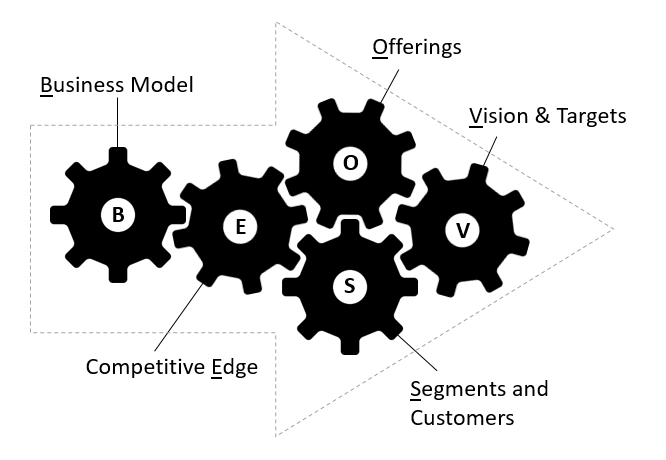
There is no such thing as HR strategy, sales strategy, R&D strategy, customer support strategy, or marketing strategy. There is one overarching corporate strategy. Then of course, in addition, there can be HR, sales, marketing, R&D and customer support plans that outline what needs to be done in each area in order to realize the company’s corporate strategy. For the very same reason, there is no such thing as a “Digital strategy”.
So we are done? No, not really!
This doesn’t necessarily mean that you can sit back and relax and forget everything about digitalization; unfortunately not. It just means that you should not run away and develop a standalone digital strategy. Rather, what you should do is review, challenge and possibly also refine your corporate strategy in order to ensure it captures and considers both the opportunities and threats that come with digitalization.
Three analytical starting points
At 2by2, we approach the digitalization issue from an analytics perspective. We specifically leverage three different starting points to make sure the assessment is comprehensive. Our three starting points are 1) the customer, 2) the product and 3) the value chain.
1. The customer
Digitalization has the power to fundamentally change customers’ preferences and behaviors and the objective of the first analytical starting point is to understand that fully.
For example, digitalization of TV has led to the introduction of streaming services such as Netflix. According to a recent survey in the US, 56%3 of viewers stream movies and 53%3 stream TV shows on a monthly basis, compared with 45%3 who prefer to watch TV programs live.
Here we answer critical questions about the customers’ behaviors and preferences and conclude how these might change as a result of digitalization.
In the early days of eCommerce, one common belief was that customers would never buy shoes online because of the issue of fitting. Today, online shoe sales are worth $154 billion in the US alone, growing annually by more than 21%4 between 2010 and 2015 and employing 5,7674 people. Truly understanding customers behaviors and preferences is essential, don’t just assume.
2. The product
Through the second analytical starting point, we approach the digitalization issue from a product perspective. Does digitalization open up new opportunities, or threats, when it comes to the actual product. Can the physical product be replaced with a digital one? Does digitalization open up new ways to distribute the product?
3. The value chain
In the third analytical starting point, we approach digitalization from an end-to-end value chain perspective. What potential impacts will digitalization have on the value chain? How will the profits be distributed/redistributed in a digitalized value chain? What is the likelihood of new entrants in the new value chain?
Strategy review based on digitalization insights
By using three fundamentally different analytical views on digitalization we aim to create transparency and clear perspectives on how digitalization can potentially have an impact on an industry. With that newly gained insight, we then engage in a strategy review that thoroughly goes through the five different components in the corporate strategy in order to understand what changes need to be applied to fully account for opportunities and threats.
Vision and targets: Is your vision still valid with the changes that digitalization brings to the market and does your overall target remain intact?
Offering: Does digitalization change the way you define your offering, what you bring to the market? Are you still addressing the same customer need?
Segments and customers: With digitalization, will you still target the same segments in the markets and the same customers?
Competitive edge: Does digitalization of your industry change possible sources of competitive advantage and does your definition of your own uniqueness remain the same?
Business model: Does digitalization fundamentally change your business model or is your currently defined one still optimal?
Digitalize your strategy – don’t make a digital strategy
One of today’s hottest topics is digitalization. It has the power to fundamentally change how industries are structured and how customers behave. As everybody is talking about it, it is tempting to create a digital strategy. We strongly believe this is not the way to go; we believe there should only be one strategy: your corporate strategy. The changes that come with digitalization articulate a need to review and potentially refine your corporate strategy, but do not create a standalone digital strategy.
Digitalize your strategy – don’t make a digital strategy
Sources:
- ITU (International Telecommunication Union), ICT Facts & Figures, The world in 2015
- Economist
- Deloitte
- IBISWorld
- IFPI

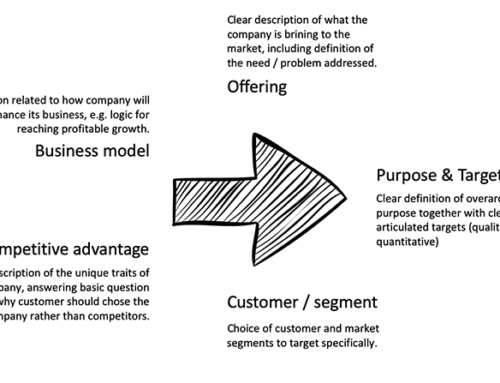
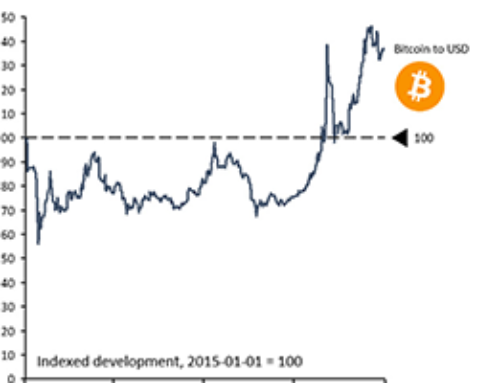
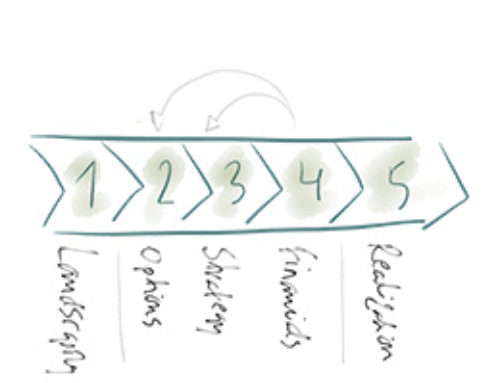
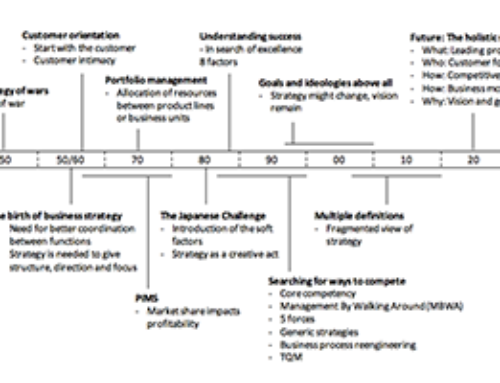
Leave A Comment